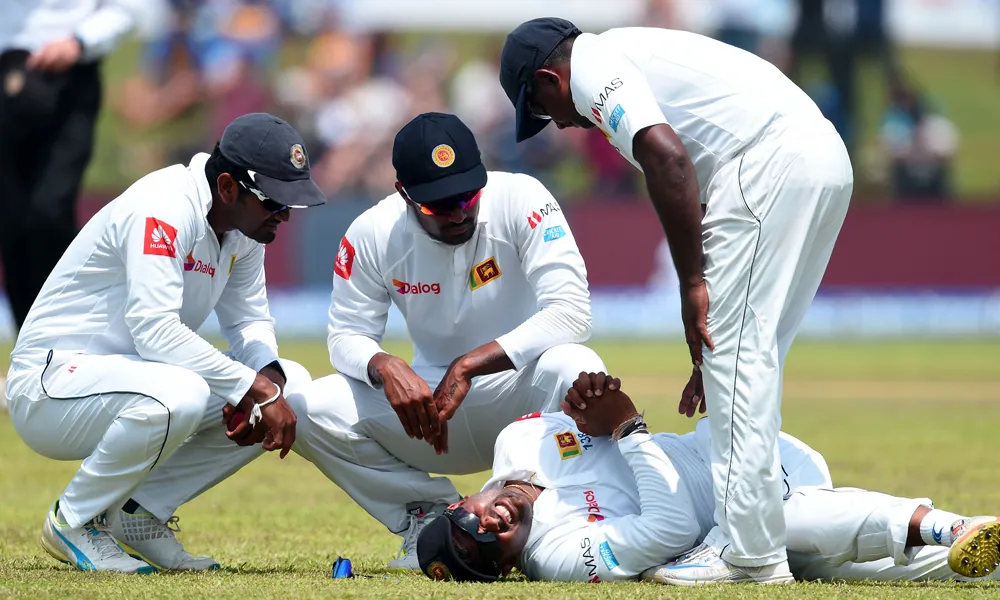Cricket's Injury Epidemic: Navigating the Challenges of Player Health

Cricket, with its blend of explosive athleticism and prolonged physical exertion, places immense strain on the bodies of its players, making injuries an all-too-common occurrence in the sport. From muscle strains and stress fractures to more serious injuries such as concussions and ligament tears, the physical demands of cricket present a myriad of challenges for players, coaches, and medical staff alike. In this blog, we delve into the complex landscape of cricket's injury epidemic, exploring the factors contributing to player health challenges and the strategies employed to mitigate risk and ensure the well-being of athletes.
The Toll of the Game: Understanding Cricket's Physical Demands
Cricket is a sport characterized by bursts of explosive activity interspersed with periods of rest, placing unique demands on the bodies of its players. Fast bowlers, in particular, bear the brunt of these demands, subjecting their bodies to repetitive stress and strain as they deliver balls at speeds exceeding 90 miles per hour. Batsmen, too, face their own set of challenges, contending with the impact of fast deliveries on their hands, wrists, and shoulders, as well as the risk of being struck by the ball.
Overuse and Fatigue: The Silent Enemies of Player Health
One of the primary factors contributing to cricket's injury epidemic is overuse and fatigue, as players grapple with the demands of a grueling schedule that often includes back-to-back matches and extended periods of play. Cumulative stress on muscles, tendons, and joints can lead to overuse injuries such as tendonitis, stress fractures, and muscle strains, while mental fatigue can impair concentration and decision-making, increasing the risk of on-field accidents and injuries.
The Impact of Technology: A Double-Edged Sword
While advances in sports science and technology have revolutionized the training and conditioning regimes of cricket players, they have also introduced new challenges and risks to player health. High-tech equipment, such as composite bats and lightweight protective gear, have enhanced performance and safety on the field but have also raised concerns about the potential for increased force and velocity in collisions and impacts. Additionally, the proliferation of video analysis and biomechanical testing has led to a greater emphasis on technique and biomechanics, placing additional strain on players to conform to idealized standards of form and motion.
Concussions: A Growing Concern in Cricket
Concussions have emerged as a major concern in cricket in recent years, with growing awareness of the long-term effects of head injuries on player health and well-being. Fast bowlers and close-in fielders are particularly vulnerable to head injuries from bouncers, deflections, and collisions, necessitating stringent protocols for concussion assessment and management. The implementation of concussion substitutes and mandatory head injury assessments has helped mitigate the risk of serious head injuries on the field, but continued vigilance and education are essential to safeguarding player health.
Player Welfare: Prioritizing Health and Safety
In response to cricket's injury epidemic, governing bodies, teams, and medical professionals have implemented a range of measures to prioritize player welfare and mitigate injury risk. These measures include comprehensive pre-season screening and fitness assessments, tailored strength and conditioning programs, proactive injury prevention strategies, and robust concussion management protocols. Additionally, greater emphasis is being placed on player workload management, with rest periods and rotation policies implemented to prevent overuse injuries and fatigue.
Conclusion: Balancing Performance and Protection
As cricket continues to evolve and thrive as a global sport, the health and well-being of its players must remain a top priority. By understanding the unique physical demands and risks associated with cricket, and implementing proactive measures to mitigate injury risk and safeguard player welfare, cricket stakeholders can ensure that the sport remains a safe and enjoyable pursuit for athletes at all levels. Through collaboration, innovation, and a commitment to best practices in sports medicine and athlete care, we can strike the delicate balance between performance and protection, ensuring that cricket remains a game for all to enjoy for generations to come.

